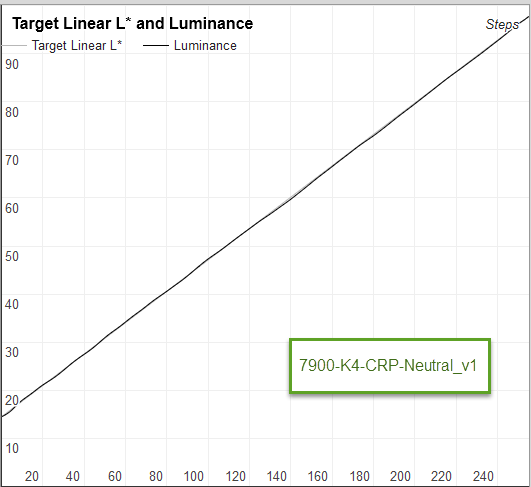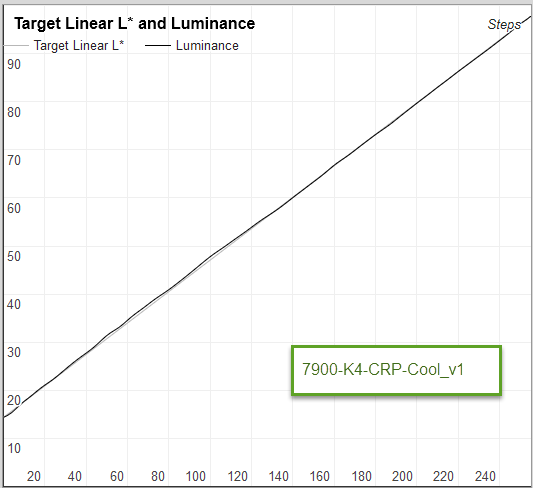I’ve now completed the linearization (51- step, 129 step) of Canson Rag Photographique on my 7900 with the PiezoPro K4 inks. Since only the Master curves are available in the Community download, I started with those as my base. I used my i1Pro2 and the i1Profiler software workflow for the measurements, reading in spot mode.
Before starting the process, I did some tests to determine the optimum “Paper Type” setting in the printer and determined that with the PiezoPro inks, Velvet Fine Art (which also is the recommended media type by Canson) gave slightly better dMax due to the heavier ink load. I’ve found in the past when building color workflow profiles that choosing an optimal media/paper type for a given paper can make meaningful differences in dMax and dot smoothness, since the ink loads can vary. Sometimes my findings are different from what vendors recommend, but in this case VFA was the best. This leads to my first question: When you make the master curves for the x900, which paper type are you choosing for matte and glossy?
Here are snapshots of the final curves (from the Error Corrector tool) for each of my linearized curves (Neutral, Cool, Warm):
[attachment file=26813]
[attachment file=26814]
[attachment file=26815]
Overall, this looks pretty good to me, however the Cool curve has some very slight hills in the lower two quadrants of the luminosity range. Interestingly, these hills weren’t noticed in the 51-step intermediate curve. Questions: Is the Cool curve in the range of what you would expect after full linearization? Why would the Neutral and Warm curves be spot on but the Cool curve show some slight variance (note, none of my measurements had any L* falses)? I’d like to understand if I need to investigate this further or just accept it as some variability in the Error Corrector/smoother tool which cannot be controlled.
Any thoughts would be appreciated.
Dave


